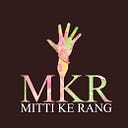Facts about Food and Agriculture Organization
“We know that a peaceful world cannot exist one-third rich and two-thirds hungry.” — President Jimmy Carter
The idea of an international organization for food and agriculture emerged in the late 19th century, advanced primarily by Polish-born American agriculturalists and activist David Lubin. In May–June 1905, an international conference was held in Rome, Italy, which led to the creation of the International Institute of Agriculture by the King of Italy, Victor Emmanuel III. World War II effectively ended the IIA. During the war, in 1943, United States President Franklin D. Roosevelt called a United Nations Conference on Food and Agriculture and FAO, the oldest permanent specialized agency of the United Nations, was formed.
Let there be bread
An estimated 1.2 billion people in developing countries still live in extreme poverty. Ending poverty and hunger are at the heart of FAO’s work and they are central goals of countries worldwide. The FAO coordinates the efforts of governments and technical agencies in programs for developing agriculture, forestry, fisheries, and land and water resources. During the 1960s the FAO concentrated on programs for the development of high-yield strains of grain, the elimination of protein deficiencies, the provision of rural employment, and the promotion of agricultural exports.
FAO’s strategic framework focused on initiatives like-
- Make agricultural forestry and fisheries more productive and sustainable.
- Reduce rural poverty.
- Enable inclusive and efficient agricultural and food systems.
- Increase the resilience of livelihoods to disasters.
- Help eliminate hunger, food insecurity, and malnutrition.
Along with these global initiatives, FAO has played a very significant role in constructing a sustainable setup region-wise as well. FAO has contributed to improving the sustainability and the resource use efficiency of rice farming systems in Asia. It involves different approaches in order to minimize the food crisis and environmental loss. Save and Grow Approach which promoted more production or output with fewer inputs. This initiative also promotes policy processes, especially reformulation and implementation of national rice strategies. These initiatives lead to a steady increase in production, thereby increasing incomes and food security as well.
FAO also works to improve livestock feeding and management by reducing to a minimum amount of grain consumed by animals and making maximum use of pasture and fodder, crop residues, and agro-industrial by-products. An FAO database entitled Tropical Feeds offers concise and updateable information on over 500 tropical feed materials in published form and on diskette. Rapidly expanding human populations are increasing the demand for agricultural products — among them livestock — and in response, production is being intensified. To help foresee and forestall possible negative side effects of intensified production and enhance positive ones, FAO is conducting studies on the influence of livestock development practices on the natural resource base.
It is often difficult for small farmers to make their voices heard in the social, economic, and political power structures.
FAO has numerous programs devoted to helping small farmers, taking into consideration the smallholders’ needs, motivations, capabilities, risks, and resources, and how these factors affect the production and marketing of produce or its use by the farm family.
Contributed By- Madhvan Dikshit, Content Writer @ Mitti Ke Rang
At Mitti Ke Rang, we started with a COVID-19 community support fundraising, as an emergency response to provide a safety net to families. This will help them survive in the lockdown period. We aim to directly support these families by providing a minimum wage, through transferring the same into their accounts or partner with local NGO, Organisation, Fellow, or a Volunteer and support them with groceries.
You can donate at:
Our Social Media:
LinkedIn — https://www.linkedin.com/in/mitti-ke-rang-mkr-81b230120/
Twitter: https://twitter.com/mitikerang?s=08
Instagram: https://www.instagram.com/mitti_ke_rang?r=nametag
Facebook: https://www.facebook.com/Mitikerang/
YouTube:
